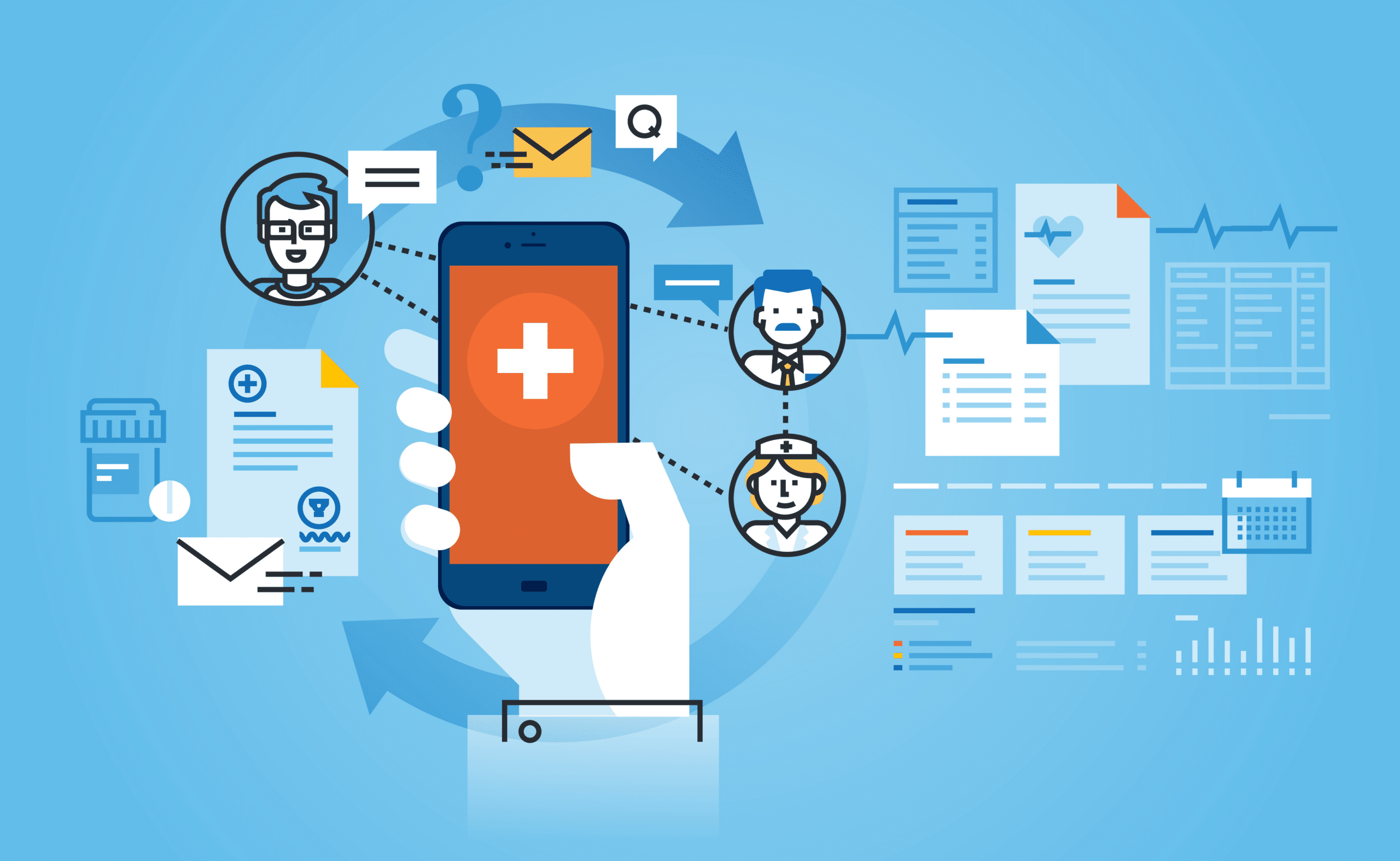Providers often deal with multiple systems to handle patient data. Between EMRs, lab data, patient contact information, paper intake forms, and more, it’s difficult to provide coordinated and efficient patient care.
With the steady influx of information systems, and the associated sharp increase in the volume of medical data for each patient, a new challenge has arisen – making patient data available whenever and wherever it is needed. Providers need systems that “talk” to one another to deliver high-quality care that makes use of that data.
What is interoperability in healthcare?
Let’s start with a quick definition. On a technical level, interoperability refers to the ability for different IT systems and software applications to communicate, exchange data, and use that healthcare information. In healthcare, that means connecting different data systems and EMRs to deliver seamless medical care to patients, so providers can see at-a-glance lab results, medical history, and past visits easily.
But it’s easier said than done. Here’s why interoperability is more important than ever for providers:
6 reasons providers need interoperability in healthcare
While most U.S. hospitals and office-based physicians have implemented an electronic health record (EHR) system, most of these systems are developed and maintained by various incompatible vendors. This incompatibility forces healthcare professionals to toggle from one screen to another to piece together a complete view of the patient. It also requires healthcare organizations to expand efforts to share healthcare data with the patients’ overall care team, like practitioners outside the organization.
Interoperability, powered by Salesforce, unlocks these disparate systems and helps providers offer a better patient experience:
1. Complete access to patient information
For patients that have a rare or chronic disease, they might see multiple doctors before receiving a confirmation on a specific diagnosis and a recommended care plan. That lag in care is partially because of lack of data exchange. Each physician office or hospital logs in a different piece of vital patient information based on specific labs or the diagnosis that they make.
To get a 360-degree view of the patient’s medical history, it is important for unique systems to exchange data.
2. Prevent manual errors
Scattered data across disparate systems increases the possibility of manual errors when someone tries to stitch these pieces together or re-enter information by hand. When dealing with serious illnesses — or even simple diagnoses that just get missed because of the wrong information — you’re seriously impacting a patient’s quality of life. Additionally, interoperability helps keep patient data more secure because of how it limits the need for manual data, transcription, and copying.
3. Improve care coordination and the patient experience
Patients must often perform administrative tasks like searching for documents, filling out multiple forms, re-explaining their symptoms or medical history, and sorting out insurance. This means today’s patient experience is still surprisingly redundant and inefficient — and patients are tired of it. Consumers know that you have the data and expect you to use it.
Care coordination benefits patients, providers, and payer organizations. Patients receive optimal care, providers are better informed, and there is less wasteful spending on things like unnecessary testing or duplicative procedures. Interoperability empowers healthcare facilities to provide patients faster, more accurate, and coordinated treatment, enhancing their overall experience.
4. Reduce healthcare costs
The redundancy of lab tests and diagnosis that occurs due to the lack of information flow leads to a significant increase in healthcare costs. Not only does this take valuable time while making diagnoses, it increases overall costs by ordering redundant tests. No patient wants to deal with multiple imaging, blood, urine, or stool tests because something got lost in translation — especially with many patients shouldering the burden of high healthcare costs, even with insurance.
5. Increase healthcare provider efficiency
By cutting out redundancies and eliminating excessive paperwork, an interconnected healthcare system can help improve the quality of service delivered by the physicians to the patients. Connected systems promote better quality and continuity of care. More than that, connecting each member of a patient’s team and sharing needed resources keeps patients out of the hospital and leading healthier lives.
6. Make the shift to value-based care
A key consideration in the shift to value-based care is the incorporation of non-traditional health data, such as an individual’s social determinants of health data. It’s important to include factors like food security status, housing stability and access to reliable transportation into patient records. This data can be leveraged by health systems to proactively identify a health risk within a target population and intervene to work toward positive outcomes.
Ultimately, the goal is to be able to share and access information that informs an individual’s full, longitudinal health story. By having and understanding the complete and accurate picture of an individual’s health — including their preferences and other determinants of health — clinicians can better inform care and decision making. Patients can also become more active participants in their care plans.
Get a 360-degree view of the patient with Salesforce Health Cloud
The right health information technology can make it easy for your organization to deliver better clinical care. Salesforce’s Health Cloud can help your organization meet their Interoperability challenges and unlock a great healthcare experience. Health Cloud provides the most complete view of the patient because it has been built with interoperability in mind. As a result, it enables users to access critical clinical and nonclinical patient information across legacy systems and data sharing between providers.
Health Cloud brings health data together on one screen for healthcare professionals, accelerating the path toward improved health outcomes and care coordination. With a 360-degree view of the patient, clinicians and staff can view health records, social determinants, and communication preferences to coordinate appropriate care while empowering front-line support teams to interact with and provide an optimal experience for patients.
With deep industry expertise and specialization in interoperability standards, Silverline is poised to help you and your team adopt the Salesforce Health Cloud platform to build an exceptional experience to better serve your patients and improve patient-provider engagement. We’ll help you build an exceptional experience to better serve your patients and improve patient-provider engagement.
For more information about how to implement interoperability in your healthcare operations, look no further.




